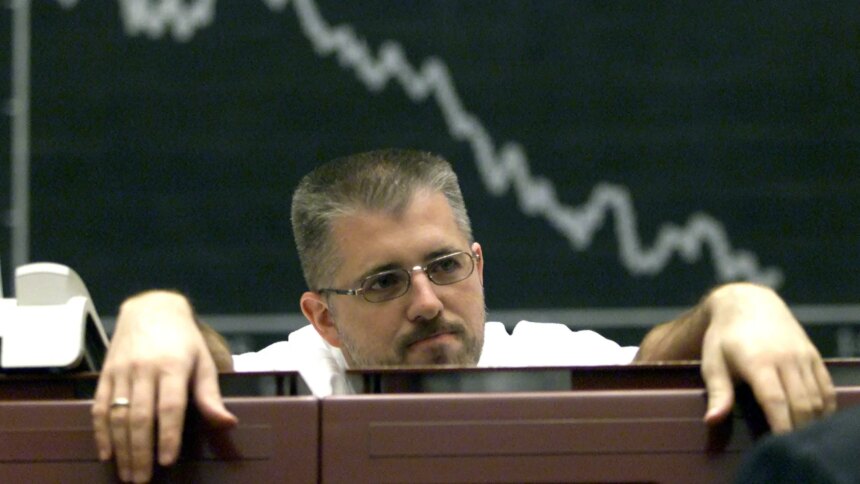U.S. stocks experienced a significant downturn on Oct. 10, primarily triggered by President Donald Trump’s stern warnings about a potential “massive increase of Tariffs on Chinese products,” along with hints that he might forego an upcoming planning meeting with Chinese President Xi Jinping. The S&P 500 plummeted by 182.60 points, or 2.7%, closing at 6,552.51. The Dow Jones Industrial Average followed suit, shedding 878.82 points, or 1.9%, to end at 45,479.60. Meanwhile, the technology-heavy Nasdaq Composite index saw a nearly 4% decline, dropping 820.20 points to finish at 22,204.43.
While financial markets have largely navigated through the ongoing government shutdown, now in its tenth day, the reaction to Trump’s remarks, shared on the Truth Social platform, was immediate and intense. Jack Ablin, chief investment strategist at Cresset Asset Management, highlighted the significance of the U.S.-China relationship: “China really is our biggest trading partner and one that investors would like to see ongoing cooperation with. I do think it’s just that we need each other.”
The market’s volatility may also stem from the recent surge in stock prices, which had reached new heights in the preceding days. Ablin noted that while the excitement surrounding artificial intelligence (AI) has buoyed valuations, the sustainability of these gains hinges on favorable conditions: “I don’t view expensive stock markets as a timing issue, but I do think it’s a headwind.”
Despite the ongoing shutdown, investors appear relatively unperturbed, although there are indications that federal policies might be starting to impact American consumers. A recent consumer sentiment survey by the University of Michigan indicated minimal overall change, but a concerning dip in a key sub-component. Oliver Allen, senior U.S. economist with Pantheon Macroeconomics, reported that the expectations index had fallen to 51.2, the lowest reading since May, down from 51.7. He added, “The headwinds facing households from the weak labor market and drag on real income growth from tariff-induced price increases suggest the 3% spending growth that now looks likely for Q3 overall is unsustainable.”
In the midst of this market turbulence, one positive development was a decrease in borrowing costs. Treasury yields fell on Oct. 10, with the yield on the 10-year U.S. Treasury dropping about 8 basis points to 4.069%. Additionally, gold prices bolstered their upward trend, gaining approximately 1.5% after recently surpassing the $4,000-per-ounce mark for the first time.







